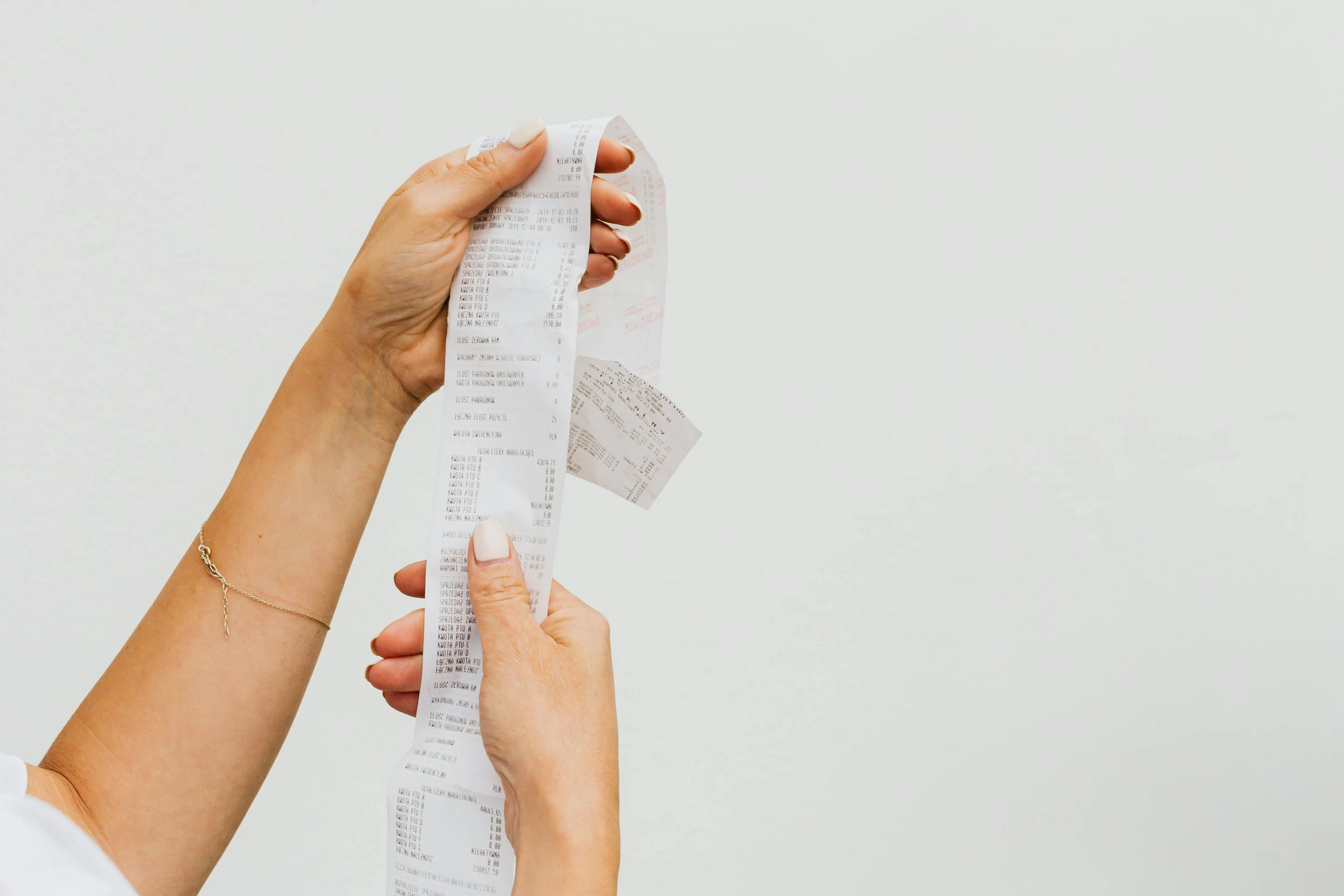I’m afraid to look at my grocery bill!
Whoa, grocery shopping has become increasingly triggering over the past handful of years. Each time I try to adjust to the higher cost of a food item, it seems to go up more, and I am faced with sticker shock all over again. This fear about “will I have enough to eat” has triggered the sense of insecurity about food I’ve held in my body ever since I first began dieting.
I’d like to acknowledge those who really don’t know where their next meal will come from. When we talk about food insecurity—the condition of not having reliable access to sufficient nutritious food—it's important to recognize that this is a devastating reality for millions. This context of scarcity is also what can make the financial stress of grocery shopping feel so deeply triggering.
According to the 2025 edition of the State of Food Security and Nutrition in the World, 900 million people faced severe food insecurity last year. As a nutritionist doing this work, I am committed to lessoning hunger, both for those with severe food insecurity and for those with disordered eating.
I’m writing this blog to those who’ve experienced a self-imposed food insecurity of sorts, caused by periods of dieting where you denied yourself either enough food or the delicious food you craved. For those with disordered eating, inflation in food prices can trigger a type of food insecurity that mirrors the insecurity imposed by dieting.
I’ve been experiencing this struggle myself and seeing it in many of my clients. I was motivated to brainstorm some ways to approach the added stress of inflated grocery prices for those in recovery from disordered eating.
Tips for recession-proofing your relationship with food:
1. Lower the bar.
Lower the bar on what constitutes as “eating healthy.” Focus instead on “eating competently.”
Dietician Ellyn Satter defines Eating Competence as “being positive, comfortable, and flexible with eating as well as matter-of-fact and reliable about getting enough to eat of enjoyable and nourishing food.” This means dropping the rules about “clean” eating, which is often more expensive, and focusing instead on flexibly getting enough food.
For example, you may choose to for-go organic at this time and grab some canned or frozen food that is on sale. Practice flexibility when choosing foods. When shopping for dinner, if your go-to is chicken breasts, consider pork chops or chicken thighs as a more affordable protein. Let potatoes, pasta, and rice be staples.
If you comfortably and confidently fed yourself beans and weenies, canned peas and bread with butter for a meal, you would be so much healthier than if you stressed about not being able to afford the whole grain organic artisan grain pilaf you think you SHOULD be eating.
2. Plan splurges/treats.
Many of my clients have a push-pull relationship with DoorDash. The reason is two-fold. A) It brings up the shame of eating fast food or something “processed.” B) It is a pricey way to eat and brings up that fear. They tend to mentally forbid using DoorDash (or other delivery apps) for both diet-culture and budgeting reasons. Unfortunately, this approach can backfire. Forbidding an eating behavior can set up a deprivation/shame/fear cycle that leads to ordering from DoorDash way more often.
What’s the antidote? Plan it in! Schedule eating take-out or “treat meals” regularly. How about planning to order out once per week on Fridays? Or whatever cadence works with your budget. Just make sure it’s consistently available. Then, flexibly allow additional ordering out for times when you just have low bandwidth to feed yourself. Consider this treat not as a frivolous extra, but as an important step in teaching your body and mind that there is enough of the food you want and need.
3. Cultivate an Abundance Consciousness.
So far in this life, I’ve learned that what you focus on grows. When you focus on lack, the high prices at the grocery store, the lack of delicious food in your cupboard, it seems that that’s all you can see. When you instead focus on abundance, you begin to see more of that in your life.
What can you do to “show” your consciousness that there is more than enough? Can you donate something from your pantry to the local food bank? Can you bake something, using mostly what’s in your pantry, for your neighbors? It’s a spiritual axiom that when you share, everyone can be better provided for. How can giving lead to an increased sense of security around food for you during this season?
I’ll conclude with some empathy. This experience is tough! You’re not alone. Many people are going through this. It’s a tough time with food costs, and if you’re recovering from disordered eating, the challenge is multiplied. Your experience is normal. And, with some planning, a perspective switch, and facing your fears with lots of self-kindness, you’ll be better able to navigate this time.
I wish you much abundance during this upcoming holiday season. If you’d like to learn more about addressing the food insecurity that comes from chronic dieting, please schedule a free meet and greet below.
Resources
FOOD SHARING: https://www.foodsystemchange.org/networking/niche-innovations/food-sharing
FOOD PANTRIES NEAR ME: https://www.foodpantriesnear.me/
WOMEN, INFANTS, AND CHILDREN (WIC): https://signupwic.com/
SALVATION ARMY: https://www.salvationarmyusa.org/
FOOD BANK: https://www.feedingamerica.org/find-your-local-foodbank
NW HARVEST (WA ST): https://www.northwestharvest.org/
SWITCHPOINT (UT): https://switchpoint.org/
FOOD STAMPS: https://www.fns.usda.gov/snap/supplemental-nutrition-assistance-program
(Please note that the SNAP Program is currently being affected by the government shutdown.)
If you or someone you know is needing support in recovering from an eating disorder or just needing support around food and body, I would love to invite you to schedule your free meet and greet session to see if we might be a good fit!




